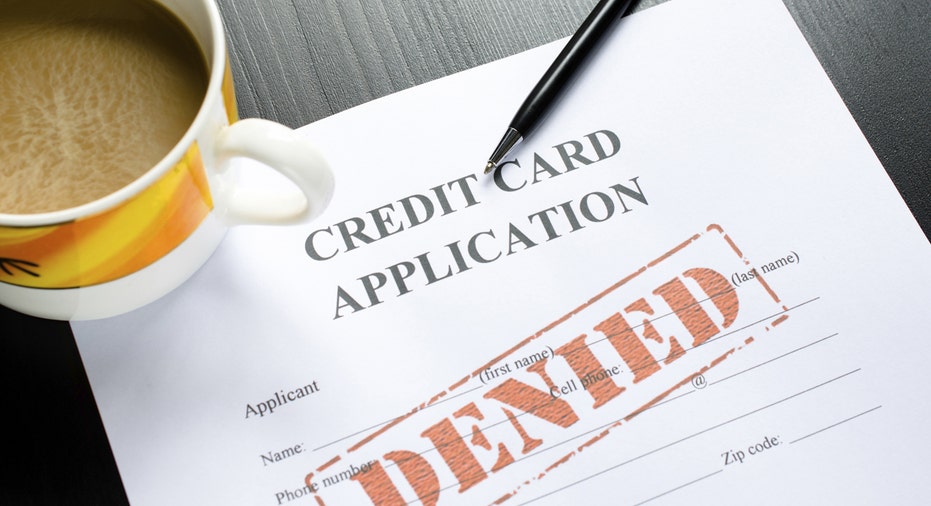The Real Reasons You Were Rejected for a Credit Card

Many consumers dread being turned down for a credit card. But what you may not realize is that you actually can control a great deal of the factors that go into the credit issuer’s decision. Of course, it’s hard to get issuers to explain their criteria because it’s essentially their secret sauce, or how they do business.
But after speaking with Eric Lindeen, vice president of marketing for ID Analytics in San Diego, California, which offers fraud prevention tools and credit risk management scores to issuers to help them manage portfolios and onboard consumers effectively, we got the inside scoop on how it all works. Read on to learn why you may have been rejected — and what you can do to avoid it.
1. Underwriting Practices Vary
“Different institutions have very different practices,” Lindeen said. Depending on where they rest on the totem pole, their underwriting process could be more or less complicated analytically. Big issuers, for instance, “could be using hundreds of variables to determine [whether to take on a borrower],” while at smaller institutions, the process may be much simpler. “There’s basically an income threshold you have to reach and a credit score cutoff, and that’s all there is,” Lindeen said.
2. Your Credit Score Stinks
“Realistically, there are only a couple levers that a bank or credit issuer has to work with,” Lindeen said, and one of those is the consumers’ credit risk, which is usually correlated with their credit score. The higher the score, the less likely they’re perceived to be a liability or get rejected, he continues, “and generally the [annual percentage rate] is going to be tied to how much credit risk there is for the consumer.”
Interestingly, large issuers have several APR “bands,” or groups, that they lump consumers into based on their credit score, Lindeen said. And “they’re going to slot you according to whatever risk you represent based on past behavior.”
Smaller institutions, by contrast, may only have two APR bands, which means consumers with poor credit may be able to qualify for a card, whereas they’d likely get rejected by a larger institution. “The smaller organizations have a bigger pool of people in a single risk band, so there are more people with better credit subsidizing those with poor credit,” Lindeen said.
3. Your Income Fell Short
Another factor that makes a big impact in whether a consumer is approved for a card or rejected is the consumer’s income and probable spend on their credit cards. Typically, the more you earn, the more you can spend, and issuers make money based on merchant interchange fees from this spending. “If [an issuer] sees someone that’s going to have a significant amount of spend, that will be a more profitable customer, so they’ll be willing to lower their APR or increase benefits in order to attract them,” Lindeen said.
What to Do
To help reduce your odds of being rejected for a credit card in the future, taking charge of your credit now is key. So if you don’t know where your credit stands, it’s a good time to find out, as doing so can help you determine whether you can take out other financing as well. (You can view two of your credit scores, updated each month, for free on Credit.com.)
If something looks suspicious or is flat-out inaccurate (think misspelled names and wrong addresses) get in touch with the credit bureau in question to hammer it out. Disputing errors on your credit report is one thing you can do to help beef up your score.
From there, you can make a game plan to get any debt and monthly payments in check. Consistently making payments on time can help improve your score while paying down outstanding debt can help lower your credit utilization — how much debt you carry on credit card(s) relative to their limits — which lowers your risk of default in lenders’ eyes. Credit experts generally recommend carrying a balance below at least 30% and ideally 10% of your limit for the best scoring results.
More from Credit.com
- Does Credit Repair Work? Can Credit Repair Companies Help?
- How to Fix Your Credit
- How to Pay Off Credit Card Debt
This article originally appeared on Credit.com.
Jill Krasny is an editor and writer at Credit.com. Prior to joining the company, she was a senior staff writer at Esquire.com and Inc. Magazine, where she covered a range of lifestyle topics. Her writing has appeared in Introspective, Travel + Leisure and MTV.com. More by Jill Krasny



















